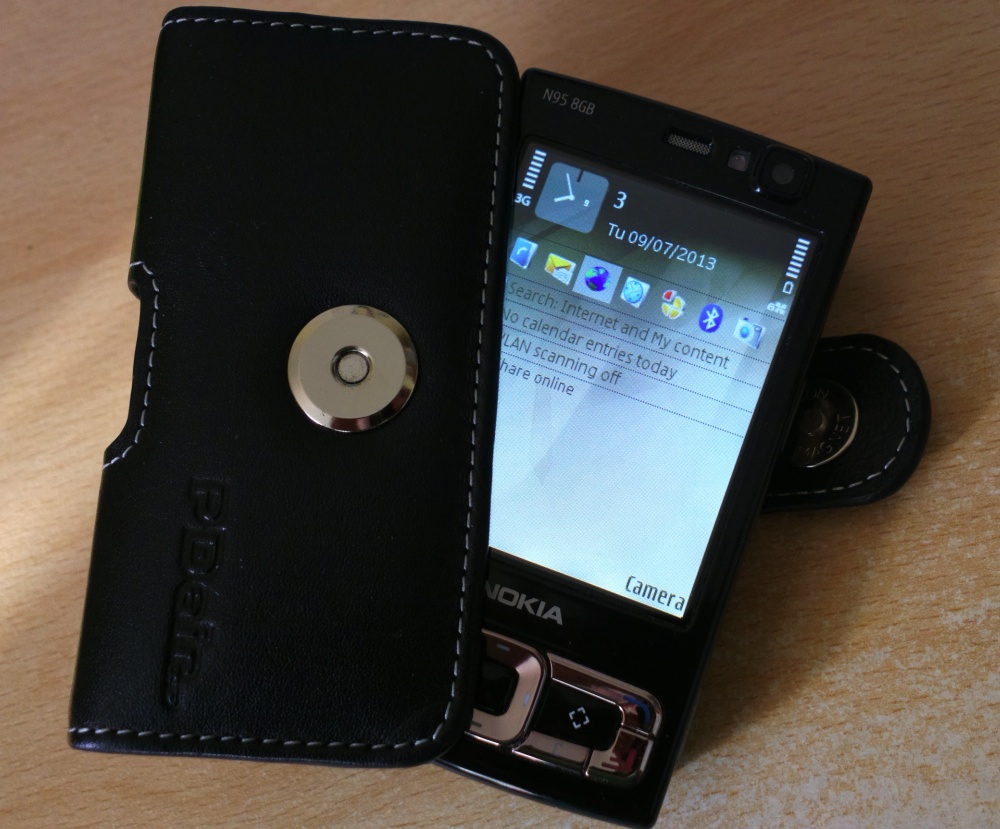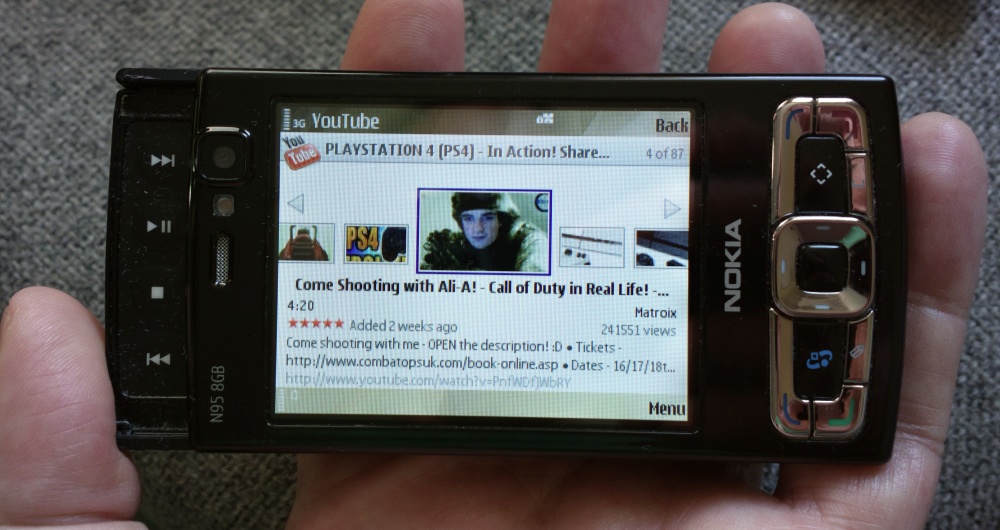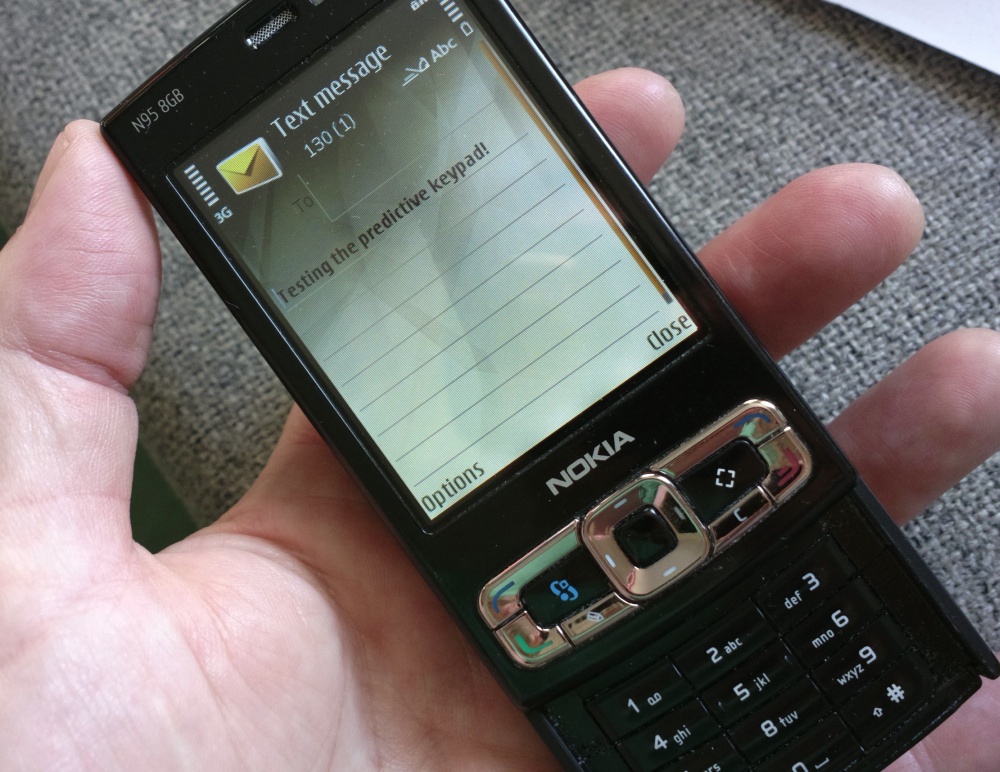I'll come to 'pimping' the N95 8GB another day - it's still terrific hardware, in the hand and the screen is just amazingly clear in all light conditions. Plus the camera, the incredible speakers, the large RAM, the multimedia controls.... But that's all for another time.

As part of the setting up process, I found myself at times confused, at times annoyed. And, curiously, not at things which invoked these reactions in 2007 - these were things which have simply changed, or improved so far in the intervening five years that the 'old' way of doing things is now deemed unacceptable.
In no particular order (though I do have ten points, honest!):
- QVGA screen resolution
It's amusing to see arguments today about 720p vs 1080p screens and whether anyone can 'see' the pixels. Back in 2007, pixels were what made up the display and 'obviously' you were going to see individual pixels... Having said that, most of us remarked at the time that the 2.8" displays on the N95 8GB and then N96 were a bit 'blocky'. Imagine how I feel today, comparing the N95 8GB display, at a massive 142 pixels per inch, to (say) a Nokia N8 with the generally derided nHD resolution yet which works out to around 210 ppi. - No microUSB socket
It's something of a shock to pick up a device from this period, reach over for one's standard connection cable and realise that this was before microUSB came out on Nokia (and long before it became an international standard). The first Nokia smartphone to get microUSB was the N82, the N95 8GB's more camera-centric sister device, but the black monster's own port was resolutely miniUSB, altogether chunkier. - No microUSB charging
True story time... I plugged my N95 8GB into my mains (USB) charger, via its miniUSB lead. "That's odd", I thought, "why isn't it charging?" I fiddled with the lead for a good minute or two before the penny dropped. The N95 8GB was also before the days when devices charged via USB as well - I believe the E72 was the first Symbian device that could charge via USB and via a 2mm jack? Red faced, I found a 2mm charger and plugged it into the N95 8GB's dedicated port. - Data transfer speeds
We're so used to fast cable speeds these days that we forget how slow USB connections used to be. The N96 introduced 'high speed' USB, many times faster - but in the meantime, the N95 8GB is stuck transferring music files at a paltry 1MB/s - so around five or six seconds per song. It's quite a shock to see the progress bar creeping along a desktop screen, etc! - No free navigation
Smart2Go, sorry, I mean Ovi Maps, no make that Nokia Maps, oh hang on, HERE Maps - wish Nokia would make up its mind - is such a fixture of every Symbian handset since 2009 that we forget the older devices are still plumbed into the old 'pay calling credit for a license' model (and yes, the licensing servers are still online, at the same prices, incredibly!) In addition to not having voice guidance out of the box, for free, the mapping interface (v2.0 is built into the N95 8GB's last official firmware) is a lot more bare bones than in recent versions, and there are few extras. - No YouTube client included - anyone remember RealPlayer?
There's no YouTube client included, or even a shortcut, in the firmware. I guess 2007 was before YouTube's real popularity? Even more shockingly, if you go to m.youtube.com in the time honoured fashion, you get served up a video which is handled by, get this, RealPlayer(!) Is it just me who hated seeing RealPlayer crank into action? Video quality is pretty terrible too, sub-QVGA. Happily, the knowledgeable geek will head for Google's QVGA-optimised YouTube client, shown below - it's archaic on modern smartphones but works very well here on the 2007 N95 8GB, so at least there's a solution.

- Slow, slow processor
Although Symbian and (here) S60 were generally speedy, once applications were up and running, certain operations seemed to take forever. Witness installing the YouTube client just mentioned - it took over a minute to install - and it's not a large application. It's all a far cry from today's Symbian smartphones, where Qt applications install in a flash... - oh wait, never mind, bad example, the N95 8GB's slow installs still look speedy compared to modern Qt Smart Installer instances! - Pop-up connection dialogs everywhere
It's true that critics of S60 back in the day used to point to the pop-up dialogs and ridicule their number. But, in fairness, few people had unlimited data in 2007 and it was important to know when your smartphone was about to go online and which access point it was going to use. Having said that, the number of pop-ups in general has decreased dramatically in the progression from S60 to Symbian Belle, to the point where, although not unfamiliar, the pop-ups on the likes of the N95 8GB do seem more intrusive than I remember them... - Entering all text using a numeric keypad
I'll probably get lambasted for this, but I was never totally happy with 't9'-style keypad text input, much preferring the QWERTY keyboards on the likes of the E71 and E72 from the same era. Many people swore by numeric keypads, of course, claiming terrific predictive text speeds, though I can't help but make an observation that's rather telling - going from 't9' to 'virtual QWERTY on a touchscreen' (as on the Nokia 5800) seemed acceptable and there was no loss in speed or practicality. But trying to go the other way, i.e. from a modern touchscreen, predictive QWERTY implementation back to a numeric keypad seems incredibly clumsy: "How on earth did we live with this method for so long?" - No cloud sync/backup
This is somewhat obvious, since the likes of Google Drive, SkyDrive, Gmail Contacts, Outlook.com, etc. were all non-existent or in fledgling form in 2007, but it's something of a shock to set up a smartphone today and realise that the only easy way of getting one's personal data onto it is via a local desktop-hosted suite, i.e. Outlook or Nokia Suite, on Windows. The N95 8GB (and other phones of the time) were fully SyncML compatible, mind, and there are still SyncML servers online, but setting such a thing up isn't really for the fainthearted. There's a Mail for Exchange client still listed in the Nokia Store on the N95 8GB (the Store itself isn't even in the firmware, you have to download an update to 'Download!' and then go through two reboots!) offering up some hope, but then Google is deprecating Mail for Exchange support, so this is probably best kept just for corporate email.
As a PS (or, if you will, no. 11, but not included in the main list because it's not relevant to my N95 8GB set up process), it's also worth noting that the N95 8GB also predated both Over The Air firmware updates (first seen on the N96) and User Data Preservation (first seen on the N82). Meaning that, should a new firmware update appear, however minor, it would have to be applied through Nokia Suite and the device would be wiped. And then restored from backed up data, of course (ideally), but the very concept of a device update which doesn't happen over the air and seamlessly seems very alien in 2013!

_____________
With all the above in mind, it's something of a cruelty when colleagues try to implicate that Symbian is 'stuck in 2007' and that the like of the Nokia N8 and 808 are little more than glorified N95s - I hope I've proved otherwise.
How far we've come in five years - indeed!
